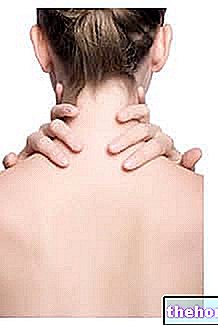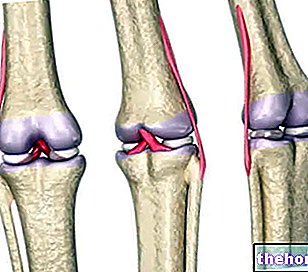In the following, the classic path of recovery, after the implantation of a total prosthesis, will be described. However, it should not be forgotten that the partial prosthesis requires shorter healing times and that each patient is a case in itself.
Factors Affecting Recovery Times
- Age of the patient
- General state of health of the patient
- Type of prosthesis used
- Previous knee surgery
THE FIRST DAYS
In the past, the solution considered best for the newly operated patient was bed rest, despite the risk of thrombosis.

Today, however, thanks to modern prostheses and advanced surgical technology, the situation has completely changed. In fact, the medical staff advocates the immediate resumption of movement (even on the day of the operation), to be carried out, obviously, with the help of crutches or a walker.
The hospitalization is, therefore, short (about a week) and serves as a precautionary measure. The greatest attention is paid to the sutured wound, to avoid infection.
THE RECOVERY TIMES
The patient must use crutches, or the walker, for a long period of about 3-6 weeks. This is the time it takes, for the wound and the musculo-ligament system, to heal and return to normal.
As long as walking is reduced, injections of anticoagulant (eg heparin) are given to prevent blood clots from forming in the legs.
If the patient diligently follows the rehabilitation program and does not rush the times, the resumption of normal activities normally takes place after 3 months. Among the normal activities, sports practice is also included (maximum caution), with the exception of all those sports in which there is the danger of performing extreme movements or suffering falls. Therefore, it is not recommended, especially for younger patients, to practice football, skiing, horse riding, rugby, etc.
Full recovery takes one to two years: this is the time it takes for the scar and muscles to heal properly.
The following table summarizes the average times for returning to some of the most common daily activities.
PAIN AND TIREDNESS
Post-operative pain is one ailment that patients fear the most, but it is an obligatory step during the recovery process and it is normal to feel it. If you strictly adhere to the advice of your doctor and physiotherapists, the painful sensation usually disappears in a short time.
A very similar argument also applies to the continuous feeling of tiredness. This too should not worry, as it is the natural consequence of surgery, such as knee replacement. Tiredness will begin to fade as the wound and muscle-ligament tissues heal.
PERIODIC CHECKS
The patient is called for the first post-surgery check-up, at the doctor's, after about 6-12 weeks. If healing is progressing smoothly, the second checkup is set exactly one year after the first.
If, then, the second check also gives a positive result, all subsequent checks will be set at 5 years apart from each other. On these occasions, in addition to evaluating joint mobility, an X-ray examination will also be performed to establish the state of wear of the prosthesis.
THE MOVEMENTS TO AVOID
The post-operative period is delicate and every movement performed must be taken care of in the smallest details, if you want to recover in the best possible way. A wrong gesture, in fact, can have deleterious effects on the newly implanted prosthesis. Here are the most dangerous movements, which should be avoided, and some tips.
What are the movements to avoid?
- Avoid turning the knee
- Don't cross your legs
- Avoid compressing the wound
- Don't put a pillow under your knee when you sleep. There is a risk of permanent knee flexion
- Do not kneel (it is the doctor who will tell you when it is possible to do so)
- Do not sit on chairs that are too low
Some advices
- With crutches, go up the stairs by advancing the healthy limb first
- With crutches, go down the stairs by advancing the operated limb first
- Get out of bed on the side of the operated limb and at the foot of the bed
- Enter and exit the car at the foot of the road
THE REHABILITATION
Rehabilitation plays a fundamental role in recovering good joint mobility in the appropriate time.
The rehabilitation process, which begins 24-48 hours after the operation, consists of an exercise program to be performed in the gym. Here, the patient is looked after by a physiotherapist, who shows which exercises to perform, correcting any errors. of execution.
After discharge, it is suggested to combine the gym with exercises to be practiced at home (also illustrated by the physiotherapist). The benefits that can be drawn are considerable.
Rehabilitation is an important moment, not only for physical recovery, but also for psychological one. The sensation of pain suffered at the beginning of the recovery process can discourage the patient, but the support offered by the people around him can help him to overcome such difficulties.
.
Features: because of the immobility, which the patient is forced to in the first post-operative period, blood clots (thrombi) can form inside the veins. These clots obstruct normal blood flow, with deleterious effects (pulmonary edema).
Solutions: exercise from the first days, take anticoagulants and wear special elastic stockings.
Features: during some operations, it may happen that the bones on which the prosthesis is implanted are fractured.
Features: it may be due to "abnormal bone regrowth around the prosthesis or to" excessive scar tissue formation where the incision was made.
Solutions: surgical removal of bone or scar tissue restores joint mobility.
Solutions: correction surgery.
Of this list, the most dangerous situations for the patient's life are infections and, above all, venous thrombosis.
HOW TO RECOGNIZE A THROMBOSIS?
The formation of a thrombus is characterized by the appearance of heat, redness, joint stiffness or pain in one of the two legs (not necessarily the operated one).
If, on the other hand, lung pain and shortness of breath are felt, it means that the thrombosis is taking on the characteristics of pulmonary edema.
In both cases, you should contact your doctor immediately.
THE RISKS OF A SECOND PROSTHESIS
A second knee replacement surgery, in addition to being difficult to perform for the reasons already mentioned, is also less effective. Therefore, in these situations, the risk / benefit ratio is in favor of the former.




























